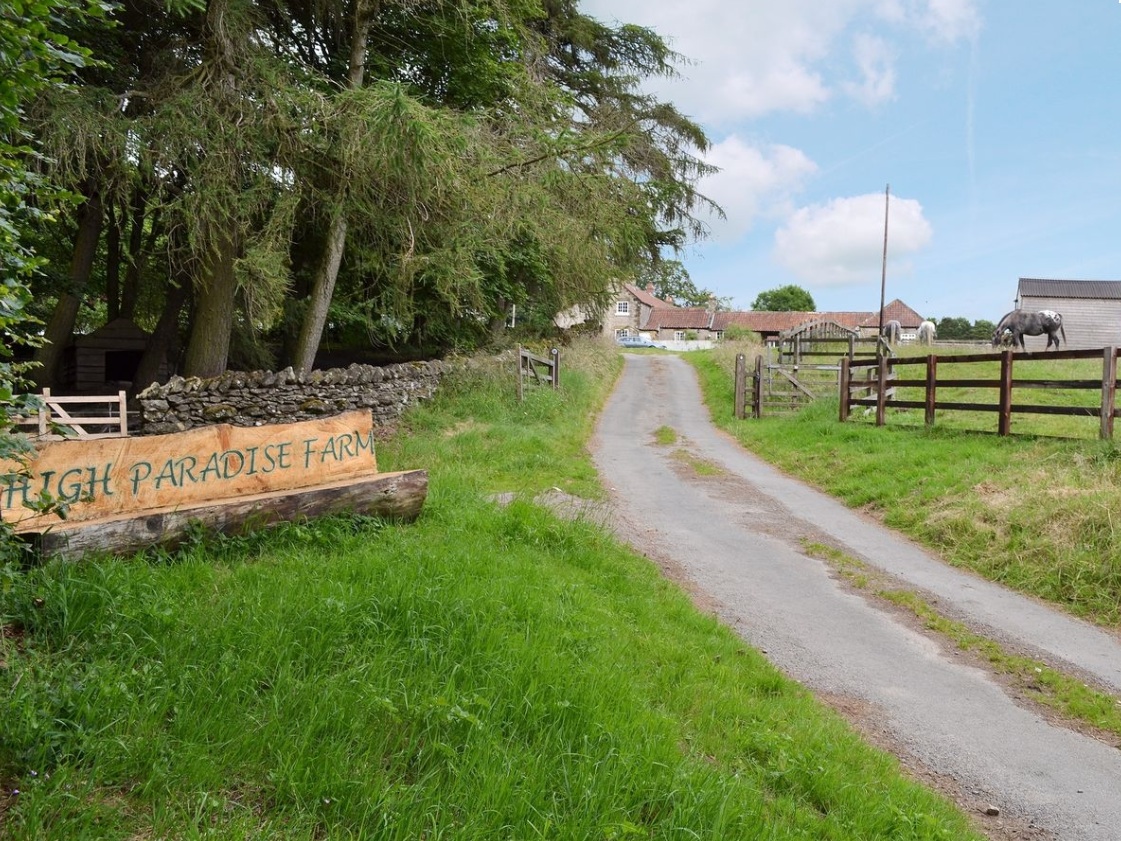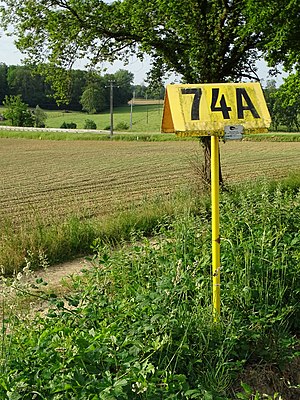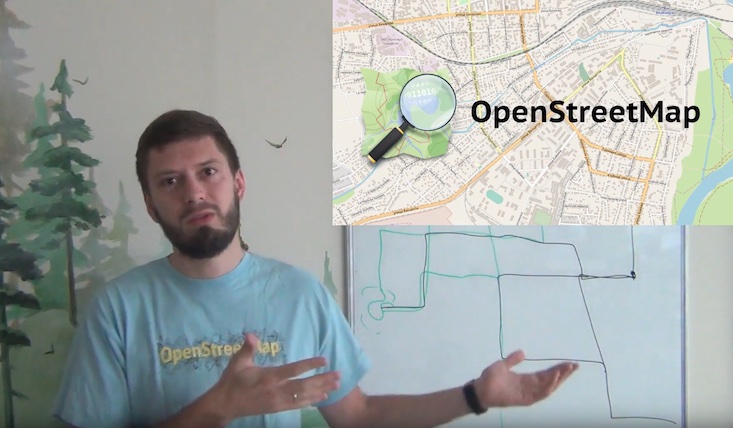ШТОСМ
Главный вопрос OpenStreetMap
Сейчас в Призрене, Косово, идёт конференция State of the Map SEE (юго-восточной Европы). Видеозаписей не будет: она по-настоящему локальная, для той пары сотен человек, кто понимает английский. После моего доклада появились несколько идей, которые стоило записать. Если хотите контекст — следите за телеграм-каналами @foss4g_ru и @shtosm.
Рассказал про OpenStreetMaps во множественном числе.
Сейчас в Призрене, Косово, идёт конференция State of the Map SEE (юго-восточной Европы). Видеозаписей не будет: она по-настоящему локальная, для той пары сотен человек, кто понимает английский. После моего доклада появились несколько идей, которые стоило записать. Если хотите контекст — следите за телеграм-каналами @foss4g_ru и @shtosm.
Рассказал про OpenStreetMaps во множественном числе. Втопил за многоязычность и разнообразие среди участников — и понимание, что у нас не одна OpenStreetMap с единым всемирным сообществом, а тысяча отдельных OSM с тысячью маленьких и больших сообществ, у каждого из которых свои практики тегирования и мнения о полноте карты. Я не понимаю, как здесь, в Косово, отметят свои кебабные рестораны на карте их владельцы, когда они не могут даже узнать про OSM (сайт этой конференции — только на английском) и узнать его правила (перевода вики на албанский нет).
Сейчас с Феликсом классно обсудили эти наблюдения. Спросил у него про нападки на Missing Maps. Европейцы замечали, что от всей этой инициативы веет колониализмом: белые мужчины решают, как выглядеть карте Африки и Азии. С другой стороны, карта колониальна по своей природе: ты идёшь в соседний двор и решаешь, как ему выглядеть на карте, что должно там быть и что нет. Карта — это власть; нельзя делать карту и не иметь власти. Цель подобных конференций — поделиться этой властью, дать её как можно большему количеству людей.
Но, опять же, среди слушателей нет владельцев кебабных. Они не поймут доклады, хотя среди них есть очень доходчивые ликбезы, потому что они на английском. Нужно ли им это? Закрадывается странная мысль, что может, пусть они жарят свои кебабы, карта им ни к чему. Поэтому их нет в OSM. Это опасно походит на поверье десятилетней давности, что женщин в технических профессиях мало, потому что это не женское дело, это им не интересно. Стыдная мысль, даже писать её неловко.
Другое, о чём мы задумались, — OpenStreetMap как средство получения и передачи знаний. Ты не рисуешь домики, а узнаёшь, как устроена карта, как проекция влияет на прямоту углов, как спутниковые снимки соотносятся с картой. Ты получаешь важные знания и даже не обращаешь на это внимание. Потенциальные картографы в деревнях, охваченных Missing Maps, лишаются этого: всё нарисовано за них. Для компаний и кампаний OpenStreetMap — это данные. Нужно больше данных, нужны свежие данные. Но людям нужны не данные, а знания. Люди — особенно люди из далёких стран — предпочтут научиться, предпочтут освоить удочку, а не получить рыбу. Закрашивая карту из лучших побуждений, мы лишаем этих людей знания.
Важная часть обучения картографии — ошибки. Придя в проект, ты рисуешь кривые домики, выбираешь глупые теги (я помню про свои juridical_faces) и забываешь соединить улицы. Потом понимаешь, в чём ошибка. Придумываешь свои теги, обращаешь внимание на мелочи, которые не интересуют других: на полосы обгона, кусты вдоль дороги, люки. Быть в OpenStreetMap на заре его становления было классно: ты двигался наощупь и узнавал многое в процессе.
Сейчас если ты сделаешь ошибку, тебе в личку быстро придёт кто-то из сотни валидаторов и сообщит о ней. Может, даже отругает. Всё стандартизировано, везде валидаторы. Карту используют в Facebook, Mapbox, Microsoft, Apple. Она должна быть однообразна и корректна. У современных новичков в OSM нет права на ошибку. Они приходят и становятся частью даже не сообщества, а армии картографов, где всё должно быть ровно, параллельно и покрашено в уставные цвета. Из проекта уходит игра и приходят задачи. А игра — это лучший способ получить знания. Корпорации и опытные картографы лишают участников знаний в обмен на большие и качественные данные.
Непонятно, что с этим делать. Возможно, это лишь моментное чувство, а OpenStreetMap, как мы знаем, не оперирует моментом: на него нужно смотреть через десять, пятьдесят лет. ML и AI, которые никогда не приносят новых знаний, как пришли, так и уйдут. Может, мы поймём, что OSM идёт не туда, и сделаем альтернативу. Может, мы запретим массовые правки. Или запретим препятствовать им. В ближайшие годы нам придётся ответить, что такое OpenStreetMap. Данные или карта? Игровая площадка или галеры? Средство общения или проект? Польза или сообщество? Наш совместный ответ определит будущее проекта — и, конечно, оно не понравится никому в любом случае.
Сейчас в Призрене, Косово, идёт конференция State of the Map SEE (юго-восточной Европы). Видеозаписей не будет: она по-настоящему локальная, для той пары сотен человек, кто понимает английский. После моего доклада появились несколько идей, которые стоило записать. Если хотите контекст — следите за телеграм-каналами @foss4g_ru и @shtosm.
Рассказал про OpenStreetMaps во множественном числе.
Сейчас в Призрене, Косово, идёт конференция State of the Map SEE (юго-восточной Европы). Видеозаписей не будет: она по-настоящему локальная, для той пары сотен человек, кто понимает английский. После моего доклада появились несколько идей, которые стоило записать. Если хотите контекст — следите за телеграм-каналами @foss4g_ru и @shtosm.
Рассказал про OpenStreetMaps во множественном числе. Втопил за многоязычность и разнообразие среди участников — и понимание, что у нас не одна OpenStreetMap с единым всемирным сообществом, а тысяча отдельных OSM с тысячью маленьких и больших сообществ, у каждого из которых свои практики тегирования и мнения о полноте карты. Я не понимаю, как здесь, в Косово, отметят свои кебабные рестораны на карте их владельцы, когда они не могут даже узнать про OSM (сайт этой конференции — только на английском) и узнать его правила (перевода вики на албанский нет).
Сейчас с Феликсом классно обсудили эти наблюдения. Спросил у него про нападки на Missing Maps. Европейцы замечали, что от всей этой инициативы веет колониализмом: белые мужчины решают, как выглядеть карте Африки и Азии. С другой стороны, карта колониальна по своей природе: ты идёшь в соседний двор и решаешь, как ему выглядеть на карте, что должно там быть и что нет. Карта — это власть; нельзя делать карту и не иметь власти. Цель подобных конференций — поделиться этой властью, дать её как можно большему количеству людей.
Но, опять же, среди слушателей нет владельцев кебабных. Они не поймут доклады, хотя среди них есть очень доходчивые ликбезы, потому что они на английском. Нужно ли им это? Закрадывается странная мысль, что может, пусть они жарят свои кебабы, карта им ни к чему. Поэтому их нет в OSM. Это опасно походит на поверье десятилетней давности, что женщин в технических профессиях мало, потому что это не женское дело, это им не интересно. Стыдная мысль, даже писать её неловко.
Другое, о чём мы задумались, — OpenStreetMap как средство получения и передачи знаний. Ты не рисуешь домики, а узнаёшь, как устроена карта, как проекция влияет на прямоту углов, как спутниковые снимки соотносятся с картой. Ты получаешь важные знания и даже не обращаешь на это внимание. Потенциальные картографы в деревнях, охваченных Missing Maps, лишаются этого: всё нарисовано за них. Для компаний и кампаний OpenStreetMap — это данные. Нужно больше данных, нужны свежие данные. Но людям нужны не данные, а знания. Люди — особенно люди из далёких стран — предпочтут научиться, предпочтут освоить удочку, а не получить рыбу. Закрашивая карту из лучших побуждений, мы лишаем этих людей знания.
Важная часть обучения картографии — ошибки. Придя в проект, ты рисуешь кривые домики, выбираешь глупые теги (я помню про свои juridical_faces) и забываешь соединить улицы. Потом понимаешь, в чём ошибка. Придумываешь свои теги, обращаешь внимание на мелочи, которые не интересуют других: на полосы обгона, кусты вдоль дороги, люки. Быть в OpenStreetMap на заре его становления было классно: ты двигался наощупь и узнавал многое в процессе.
Сейчас если ты сделаешь ошибку, тебе в личку быстро придёт кто-то из сотни валидаторов и сообщит о ней. Может, даже отругает. Всё стандартизировано, везде валидаторы. Карту используют в Facebook, Mapbox, Microsoft, Apple. Она должна быть однообразна и корректна. У современных новичков в OSM нет права на ошибку. Они приходят и становятся частью даже не сообщества, а армии картографов, где всё должно быть ровно, параллельно и покрашено в уставные цвета. Из проекта уходит игра и приходят задачи. А игра — это лучший способ получить знания. Корпорации и опытные картографы лишают участников знаний в обмен на большие и качественные данные.
Непонятно, что с этим делать. Возможно, это лишь моментное чувство, а OpenStreetMap, как мы знаем, не оперирует моментом: на него нужно смотреть через десять, пятьдесят лет. ML и AI, которые никогда не приносят новых знаний, как пришли, так и уйдут. Может, мы поймём, что OSM идёт не туда, и сделаем альтернативу. Может, мы запретим массовые правки. Или запретим препятствовать им. В ближайшие годы нам придётся ответить, что такое OpenStreetMap. Данные или карта? Игровая площадка или галеры? Средство общения или проект? Польза или сообщество? Наш совместный ответ определит будущее проекта — и, конечно, оно не понравится никому в любом случае.
 OpenStreetMap Blogs
OpenStreetMap Blogs Consulta Cep no Overpass;
Consulta Cep no Overpass; 
 Сергей Синицын — кандидат биологических наук, который окончил психфак МГУ, но в итоге связал свою жизнь с видео-артом и работает с известной арт-группой AES+F и художницей Ириной Наховой. При этом он правит карту в OpenStreetMap. Зачем нужно рисовать дорожки, стоит ли приходить в сообщество и как OSM связан с интересными жизненными историями — обо всем этом он рассказал в
Сергей Синицын — кандидат биологических наук, который окончил психфак МГУ, но в итоге связал свою жизнь с видео-артом и работает с известной арт-группой AES+F и художницей Ириной Наховой. При этом он правит карту в OpenStreetMap. Зачем нужно рисовать дорожки, стоит ли приходить в сообщество и как OSM связан с интересными жизненными историями — обо всем этом он рассказал в 




